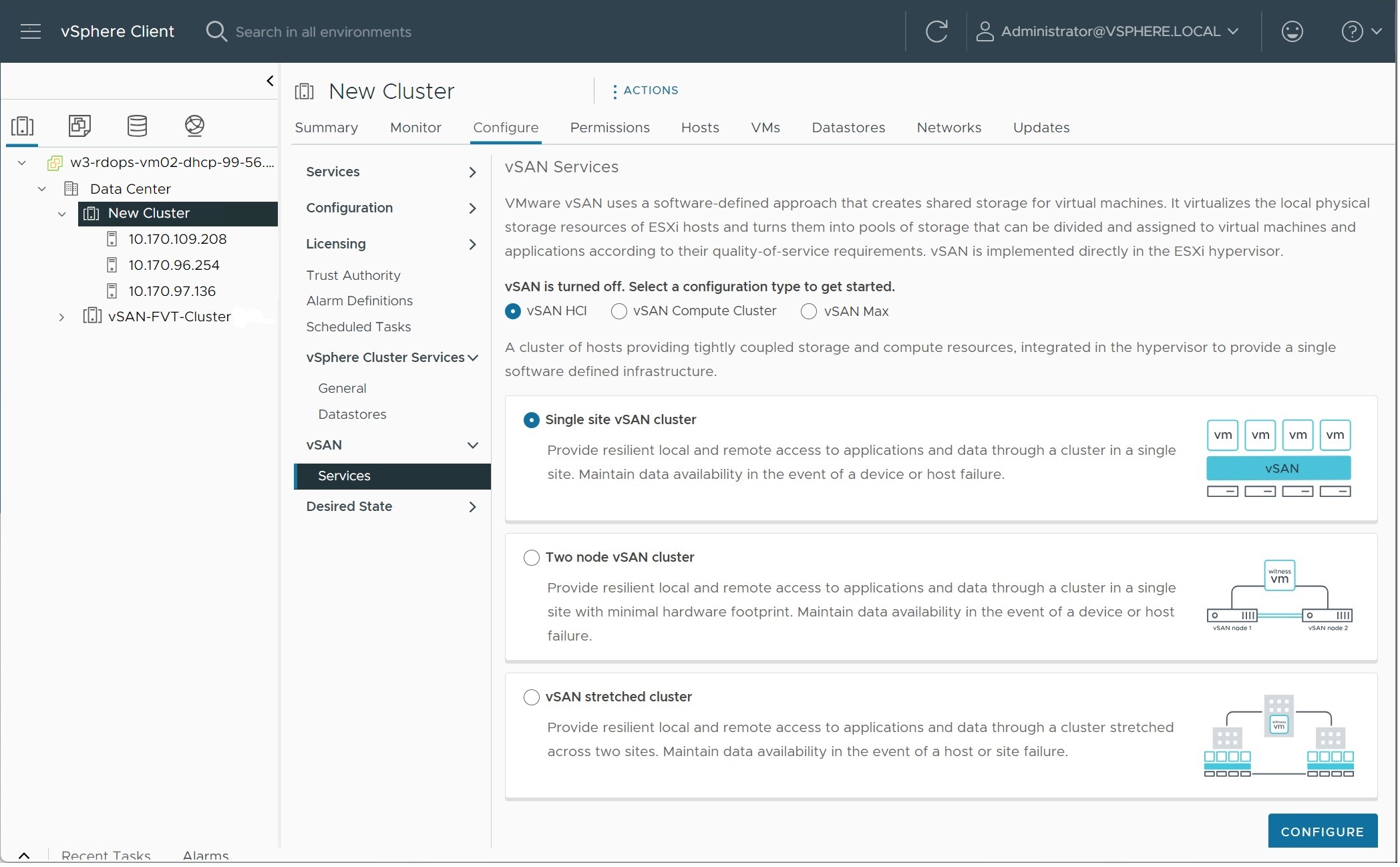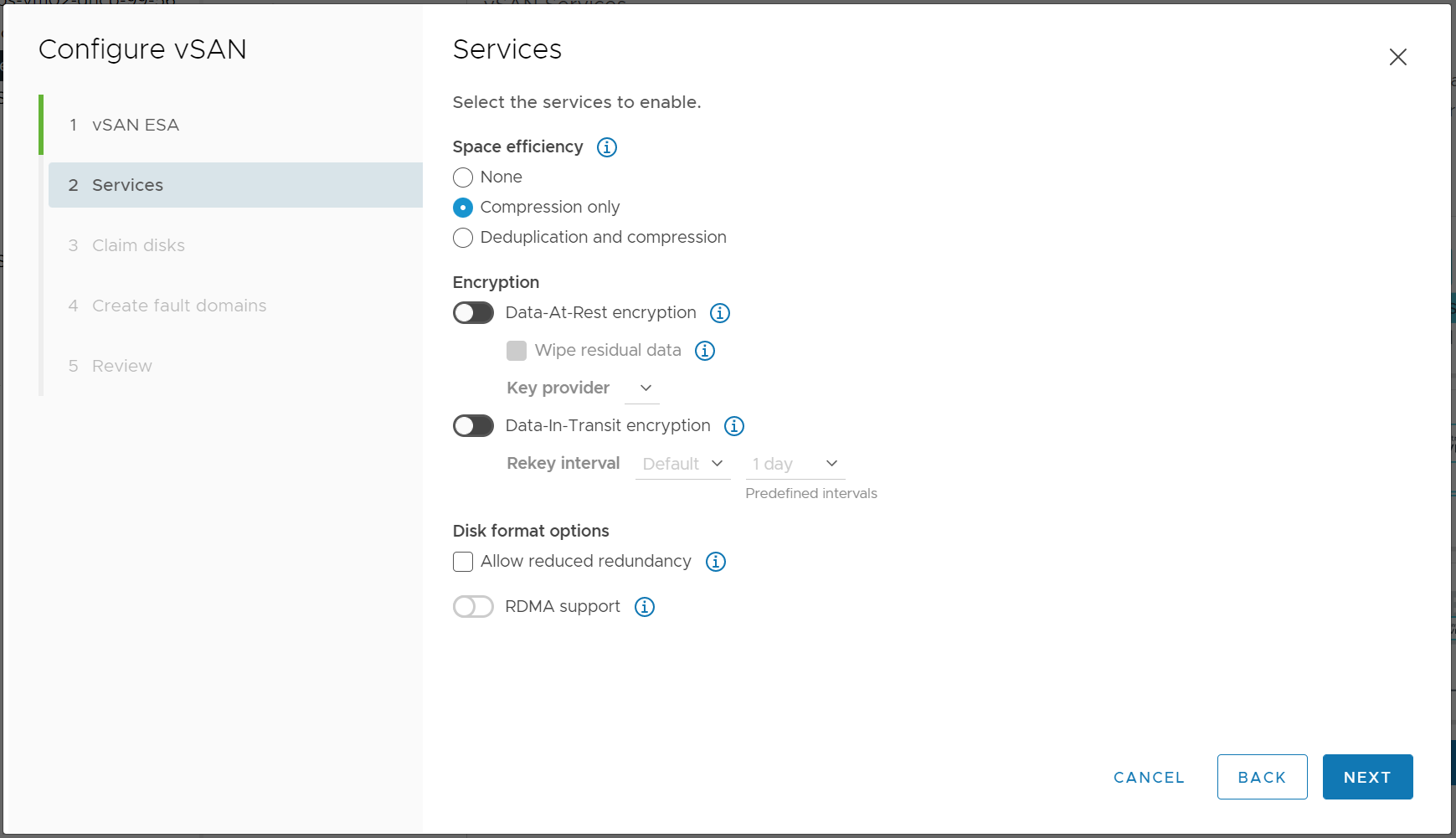You can use the vSphere Client to configure vSAN on an existing cluster.
Note:
You can use Quickstart to quickly create and configure a vSAN cluster. For more information, see "Using Quickstart to Configure and Expand a vSAN Cluster" in vSAN Planning and Deployment .
Prerequisites
Verify that your environment meets all requirements. See "Requirements for Enabling vSAN" in vSAN Planning and Deployment.
Create a cluster and add hosts to the cluster before enabling and configuring vSAN. Configure the port properties on each host to add the vSAN service.
Procedure
Results
What to do next
Verify that the vSAN datastore has been created. See View vSAN Datastore.
Verify that the vSAN storage provider is registered.

